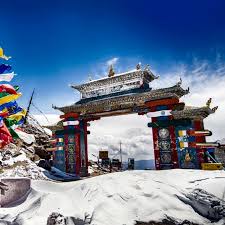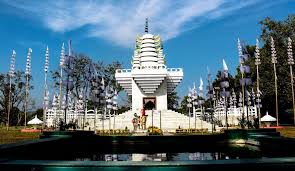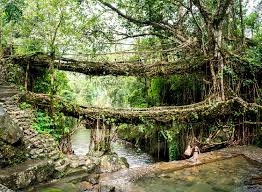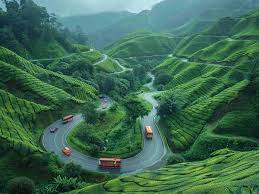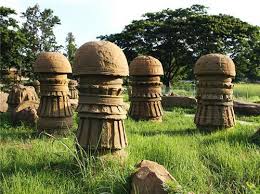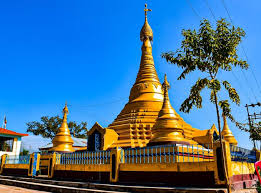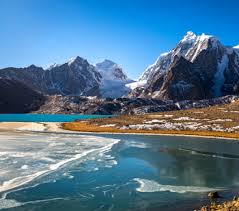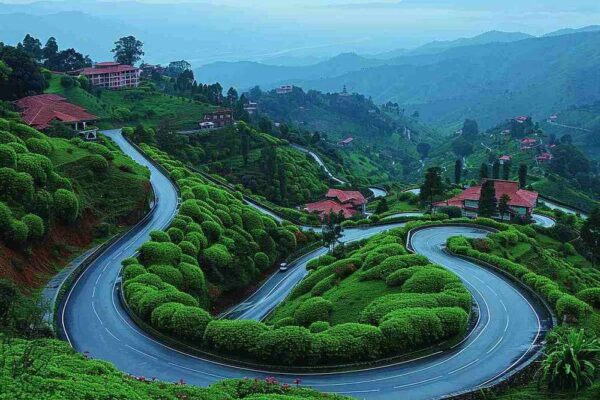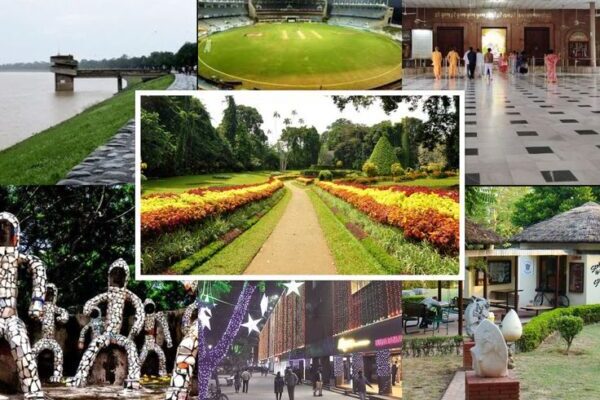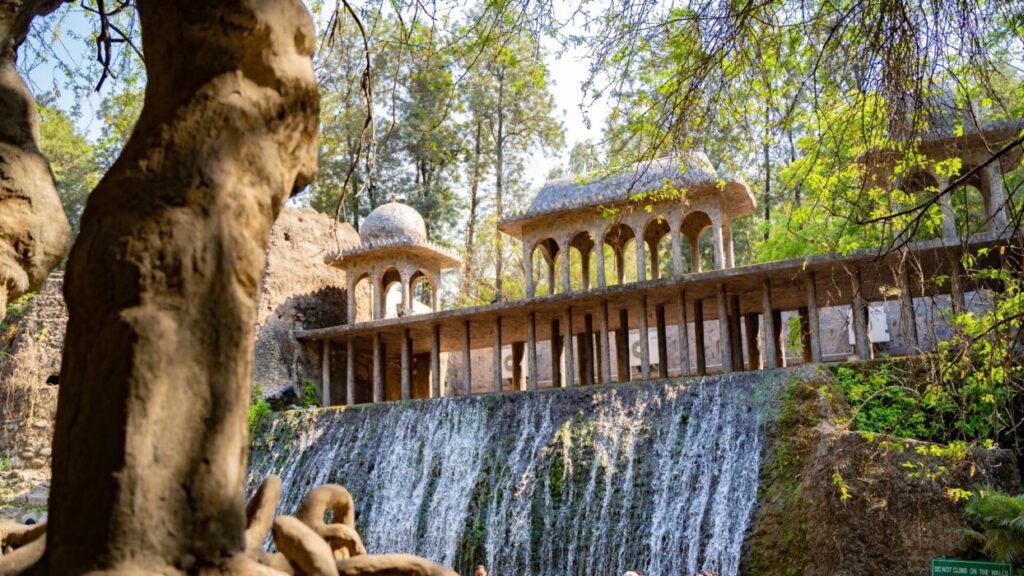05 Day(s) 04 Night(s)

Northeast India
Northeast India, also known as Northeastern India, is a treasure trove of captivating diversity, enriched with abundant natural resources, a vibrant history, and deep-rooted cultural traditions. It boasts untouched landscapes, breathtaking natural beauty, pleasant climate, rich biodiversity, rare wildlife, historical sites, and a unique blend of cultural and ethnic heritage.
The North-Eastern region of India consists of the Indian states of Arunachal Pradesh, Assam, Meghalaya, Nagaland, Manipur, Mizoram, Tripura and Sikkim. The first seven states are referred to as the “Seven Sisters of North-East India”, while Sikkim is referred to as the “little brother” of the seven sisters. This region shares international boundaries with Nepal, Bhutan, China, Myanmar and Bangladesh and is connected to the rest of India through a narrow strip of land between Bhutan and Bangladesh popularly known as the “Chicken Neck”.
Northeast India has a rich history shaped by different indigenous cultures and powerful regional kingdoms such as the Ahom dynasty ruled Assam for over 600 years and the Tripuri (Manikya) dynasty in Tripura. It was also a vital link in trade routes connecting South and Southeast Asia. The region remained largely autonomous until British colonial expansion in the nineteenth century. After India’s independence, it became part of the Indian Union, though it has often witnessed movements for autonomy and ethnic identity. Despite these challenges, the region continues to preserve its distinct cultural heritage and traditions.
A Quick Facts About North India:-
| Total States in Northeastern Region of India | 8 |
| Total Union Territory in Northeastern Region of India | 0 |
| Land Area in Northeastern Region of India | 262, 184 Sq. Kms |
| Largest State of Northeastern Region of India (in terms of Population) | Assam |
| Largest State of Northeastern Region of India (in terms of Area) | Arunachal Pradesh (covering 83, 743 Sq. Kms) |
| Largest City in Northeastern Region of India | Guwahati |
| Nagaland Foundation Day | 1st December, 1963 |
| Manipur, Meghalaya and Tripura Foundation Day | 21st January, 1972 |
| Sikkim Foundation Day | 16th May, 1975 |
| Arunachal Pradesh and Mizoram Foundation Day | 20th February, 1987 |
| Popular Places of Tourist Interest in Northeastern Region of India | Nature, Spirituality, eco & rural, culture, Adventure and more |
Tucked away amidst massive hills and opaque woods, northeast India is a culturally rich region and noted for its distinct and traditional lifestyle. The cuisine of Northeast India is varied, flavorful, and heavily influenced by tribal traditions. Rice serves as the staple, often accompanied by smoked or fermented meats, bamboo shoots, and a variety of green vegetables. Signature dishes from the region include Khar, Pitha, Fish Tenga, Sanpiau, Vawksa Rep, Axone, Eromba, Jadoh, and Zan. The cooking style typically uses minimal oil and spices, focusing instead on fresh, earthy, and natural flavors. The region also has unique folk dances and musical styles that are performed during festivals and occasions. Popular dances include the Bihu dance of Assam, Cheraw (bamboo dance) of Mizoram, Pung Cholom of Manipur, and Wangala dance of Meghalaya, often accompanied by traditional music using instruments like drums, flutes, and bamboo.
Furthermore, Northeast India’s art and craft are deeply rooted in its tribal traditions, featuring handwoven textiles, bamboo and cane products, pottery, and intricate wood carvings. Each state has its unique styles, reflecting vibrant cultural identities and a close connection with nature. The architecture of the region features eco-friendly designs using bamboo, cane, and wood, well adapted to its hilly terrain and heavy rainfall. Traditional houses, often built on stilts, reflect the functional needs as well as cultural aesthetics of the diverse tribal communities.
The Northeast region of India is religiously and linguistically diverse, with Christianity is the dominant faith in Nagaland, Mizoram, and Meghalaya. Hinduism is widely practiced in Assam, Tripura, and parts of Manipur, while Buddhism is followed mainly in Sikkim and Arunachal Pradesh, especially among Tibetan and Monpa communities. Many indigenous tribes also continue to practice their traditional animistic religions, worshipping nature and ancestral spirits.
Over 200 languages are spoken in the region, the majority of which are Tibeto-Burman, Indo-Aryan, anand Austroasiatic families. Prominent languages include Assamese, Bodo, Meitei (Manipuri), Mizo, Khasi, and Nepali, with numerous tribes speaking their own dialects.
The Northeast region of India provides a distinctive and enriching tourism experience with its untouched natural beauty, diverse cultures, and heartfelt hospitality.
Arunachal Pradesh is renowned for its serene monasteries, while Assam stands out for its expansive tea gardens and the wildlife-rich Kaziranga National Park. Meghalaya captivates with its verdant landscapes, cascading waterfalls, and unique living root bridges, whereas Manipur is celebrated for its peaceful Loktak Lake and classical dance traditions. In addition, Sikkim offers a harmonious mix of Buddhist monasteries, snowy peaks, and organic farming, Tripura showcases royal architecture, historic temples, and scenic charm, and Nagaland is famed for its vibrant cultural festivals.
Tourists have a wide range of options for theme-based vacations in Northeastern India, such as cultural & heritage, wildlife & nature, eco & rural, spiritual, wellness and more. Each type of vacation shines best in a specific season. For example, Tea gardens, adventure activities like trekking and river rafting would be at their best during the summer season. Flora & fauna exploration, spiritual and wellness retreats would be at their best during the spring season. Cultural & heritage tours like attending major festivals, and exploring Kaziranga and Manas National Parks would be at their best during the winter season.
Both Indian citizens and foreigners need permits to travel in some states of Northeast India. Specifically, Indian citizens are required to obtain Inner Line Permits (ILPs) for Arunachal Pradesh, Nagaland, and Mizoram. While, foreigners often require to obtain Protected Area Permits (PAPs) for Arunachal Pradesh and Sikkim.
This magical land celebrates a wide array of vibrant fairs and festivals that reflect its ethnic diversity and deep-rooted traditions. Major festivities include Nagaland’s Hornbill Festival, Assam’s Bihu, Manipur’s Sangai Festival, Mizoram’s Chapchar Kut, and Sikkim and Arunachal Pradesh’s Losar.
Northeast India has a major airport in Guwahati, Assam which serves as the main gateway for the northeastern states, connecting them to the rest of India and international destinations. Other notable airports of Northeast India are located in Imphal (Manipur), Shillong (Meghalaya), Dimapur (Nahgalan), Agartala (Tripura), and Itanagar (Arunachal Pradesh). There are also helicopter services to Naharlagun and Aizwal. Trains connect the region’s major cities including Guwahati and Dibrugarh, to most of the major Indian cities. Trains are always a slower mode of transportation to Northeast India as the train tracks are not electrified. Delays are likely as a result. Additionally, national highways provide good road connectivity from West Bengal to major states and cities of the region. Travellers can easily reach their desired destinations through State-Run and Private buses and local taxis/cabs. However, it is not advisable to drive personal vehicles due to security reasons.


TOUR PACKAGES OF NORTHEAST INDIA
FAQ
FAQ
Q: What is the best time to visit Northeast India ?
A: The best time to visit Northeast India depends on the weather and the type of experiences you seek, but in general:
| Months | Season | Best for |
| October to April | Winter | Exploring attractions, hiking adventures, and experiencing local cultural celebrations |
| May to June | Summer | Relishing verdant scenery and seasonal floral blossoms |
| July to September | Monsoon | Experiencing thriving greenery, cascading waterfalls, and the vivid monsoon scenery, albeit with possible travel difficulties |
Q: How many days are needed to explore Northeast India?
A: To fully explore Northeast India, plan for about 10 to 14 days. This provides enough time to visit key states like Assam, Meghalaya, Arunachal Pradesh, and Nagaland, enjoy the stunning landscapes, and immerse yourself in the local culture. If your schedule is tight, a 7–8 day trip can cover one or two states, offering a shorter yet memorable experience.
Q: What are the must visit places in Northeast India?
A: Must-visit places in Northeast India include Kaziranga National Park (Assam), home to the famous one-horned rhinos; Tawang Monastery (Arunachal Pradesh), known for its spiritual and cultural heritage; and Cherrapunji with its Living Root Bridges (Meghalaya), showcasing breathtaking natural beauty. Explore Gangtok and Tsomgo Lake (Sikkim) for stunning mountain views, Shillong (Meghalaya) for its hills and waterfalls, and the Hornbill Festival (Nagaland) for a vibrant cultural experience. Other notable attractions include Loktak Lake (Manipur), famous for its floating islands, and Majuli Island (Assam), the world’s largest river island.
Q: What makes Northeast India beautiful?
A: Northeast India captivates visitors with its stunning natural beauty, featuring mist-covered mountains, verdant valleys, and magnificent waterfalls. The region’s rich tribal heritage, diverse wildlife, and tranquil scenery make it one of the most fascinating and least explored parts of India.
Q: Does it snow in Northeast India?
A: Yes, snowfall does occur in Northeast India, especially in the high-altitude regions of states such as Sikkim and Arunachal Pradesh during the winter months.
Q: What are the best places to visit during the winter in Northeast India?
A: Some of the best places to visit in Northeast India include Tawang and Ziro in Arunachal Pradesh, Gangtok and Yumthang Valley in Sikkim, and Shillong and Cherrapunjee in Meghalaya — known for their snowfall, breathtaking landscapes, and vibrant cultural charm.
Q: Which are the major airports in Northeast India?
A: The major airports in Northeast India are:-
- Lokpriya Gopinath Bordoloi International Airport (Guwahati, Assam)
- Bir Tikendrajit International Airport (Imphal, Manipur)
- Lengpui Airport (Aizawl, Mizoram)
- Maharaja Bir Bikram Airport (Agartala, Tripura)
- Shillong Airport (Umroi Airport, Meghalaya)
- Dibrugarh Airport (Mohanbari Airport, Assam)
- Dimapur Airport (Nagaland)
- Pasighat Airport (Arunachal Pradesh)
Q: What are the best places to visit during the summer in Northeast India?
A: The best places to visit during summer in Northeast India include Shillong and Cherrapunjee in Meghalaya, Gangtok and Pelling in Sikkim, and Ziro and Tawang in Arunachal Pradesh — known for their cool climate, vibrant greenery, and peaceful mountain scenery.
Q: What are the best places to visit during the monsoon in Northeast India?
A: The best places to visit during monsoon in Northeast India include Shillong and Cherrapunjee in Meghalaya, Haflong in Assam, and Aizawl in Mizoram — offering mist-covered hills, cascading waterfalls, and vibrant green landscapes that create a truly enchanting ambiance.
Q: What are the most visited tourist attractions in Northeast India?
A: Some of the most visited tourist attractions in Northeast India include Kaziranga National Park in Assam, home to the iconic one-horned rhinoceros; Tawang Monastery in Arunachal Pradesh; Nathu La Pass and Tsomgo Lake in Sikkim; and the living root bridges of Cherrapunjee in Meghalaya.
Q: What are some popular activities to do in Northeast India?
A: Popular activities to do in Northeast India are:
- Trekking in Sikkim and Arunachal Pradesh
- Visiting cultural and spiritual sites like Tawang Monastery
- River rafting on the Teesta and Siang rivers
- Wildlife safaris in Kaziranga National Park
- Exploring the living root bridges in Meghalaya
- Experiencing local festivals like Hornbill and Ziro
Q: What are the best destinations in Northeast India for mountain biking adventure?
A: The best destinations in Northeast India for mountain biking include Sikkim (notably the Gangtok to Nathula and Yuksom trails), Arunachal Pradesh (Tawang and Bomdila routes), and Meghalaya (Shillong to Cherrapunjee circuit).
Q: What are the famous hill stations in Northeast India?
A: The famous hill stations in Northeast India include Shillong in Meghalaya, Gangtok and Pelling in Sikkim, Tawang and Ziro in Arunachal Pradesh, along with Haflong in Assam.
Q: Are there any hidden gems or offbeat destinations in Northeast India?
A: Yes, Northeast India is full of hidden gems and offbeat destinations. Some include Mawlynnong in Meghalaya (Asia’s cleanest village), Dzukou Valley in Nagaland, Sangti Valley in Arunachal Pradesh, Majuli Island in Assam, and the secluded villages around Tawang.
Q: What are some of the most popular tourist circuits in Northeast India?
A: Some of the most popular tourist circuits in Northeast India include:
- Assam – Meghalaya Circuit (Guwahati – Kaziranga National Park – Shillong – Cherrapunjee – Mawlynnong)
- Sikkim – Arunachal Pradesh Circuit (Gangtok – Pelling – Nathula Pass – Tawang – Ziro Valley)
- Sikkim Circuit (Gangtok – Pelling – Lachung)
- Golden Square Circuit ( Guwahati – Kaziranga National Park – Tawang – Cherrapunjee)
- Tantalizing Trapezoid Circuit (Agartala – Aizawl – Imphal – Kohima)
- Meghalaya Circuit (Shillong – Cherrapunjee – Dawki)
Q: Are there any UNESCO World Heritage Sites situated in Northeast India?
A: Yes, Northeast India has several UNESCO World Heritage Sites, including –
- Kaziranga National Park (Assam)
- Manas Wildlife Sanctuary (Assam)
- Charaideo Moidams (Assam, inscribed in 2024)
Q: Which are the famous festivals celebrated in Northeast India?
A: Some of the famous festivals in Northeast India are the Hornbill Festival (Nagaland), Wangala Festival (Meghalaya), Bihu (Assam), Ambubachi Mela (Assam), Ziro Festival of Music (Arunachal Pradesh), Wangala Festival (Meghalaya), Losar (Sikkim and Arunachal Pradesh), Chapchar Kut (Mizoram), and Kharchi Puja (Tripura).
Q: Which is the cheapest state in Northeast India?
A: Assam and Meghalaya are frequently regarded as the most budget-friendly states for travelers in Northeast India.
Q: Do travellers and tourists need any special permission to visit Northeast India?
A: Yes, travellers and tourists do need special permission to visit some regions of Northeast India. Indian nationals must obtain an Inner Line Permit (ILP) to enter Arunachal Pradesh, Nagaland, Mizoram, and Manipur.
Foreign visitors are required to have a Protected Area Permit (PAP) for Arunachal Pradesh, Nagaland, and certain areas of Sikkim. The remaining states — Assam, Meghalaya, and Tripura — can be visited freely without any special permits.
ILPs are available online through the respective state portals, while PAPs are issued by the Ministry of Home Affairs or authorized travel agencies.
Q: Where can travellers start a road trip through Northeast India?
A: Travellers can begin a road trip across Northeast India from Guwahati in Assam, the region’s main transport hub with excellent road and air connections. From Guwahati, popular routes extend to Shillong, Kaziranga, Tawang, Gangtok, and other key destinations in the Northeast.
Q: What are popular things to buy in Northeast India?
A: Northeast India is celebrated for its rich cultural heritage, vibrant handicrafts, and distinctive local products. Here are some of the most popular items to buy when exploring the region:
- Handwoven textiles: Traditional shawls, scarves, and mekhela chadors from Assam and Nagaland, featuring intricate tribal designs.
- Assam tea: Globally renowned for its robust flavor and refreshing aroma.
- Organic produce: Locally sourced honey, pickles, spices, and bamboo shoot specialties.
- Bamboo and cane crafts: Baskets, furniture, lamps, and decor items crafted by local artisans.
- Tribal jewelry: Striking beadwork, brass ornaments, and handcrafted accessories reflecting tribal traditions.
- Traditional art and souvenirs: Thangka paintings, wooden masks, and beautifully made pottery.
- Local delicacies: Fermented foods, black rice, and chili varieties like the Bhut Jolokia (ghost pepper).
Q: Which Northeast India cuisine should travellers and tourists try?
A: Travellers should experience the rich and varied cuisines of Northeast India, each reflecting distinct flavours and traditions. Assam’s tangy fish curry and pithas, Nagaland’s smoked meats with bamboo shoots, and Meghalaya’s pork dishes like jadoh are local favourites. Sikkim and Arunachal Pradesh delight visitors with Tibetan-inspired foods such as momos and thukpa, while Manipur and Mizoram offer wholesome, lightly spiced meals made with fresh herbs and fermented ingredients.
Q: Are there vegetarian and vegan options available in Northeast India?
A: Yes, vegetarian and vegan options can be found across Northeast India, even though the cuisine is largely meat-based. Traditional dishes often feature rice, lentils, bamboo shoots, leafy greens, and fermented vegetables, offering plenty of nutritious and flavorful choices for plant-based eaters.
Q: Is Northeast India Safe for solo travellers including women?
A: Northeast India is generally considered safe for solo travellers, including women, particularly in popular and well-frequented areas. Still, it’s wise to remain cautious, follow local customs, and avoid isolated places after dark.
Q: What should travellers pack for a trip to Northeast India?
A: Travellers planning a trip to Northeast India should pack based on the season and the region’s diverse landscapes. Here are a few key essentials to consider:
- Clothing:
- Lightweight and breathable cloth
- Warm clothing or jackets for the hills or during winter
- Shawl or Scarf
- Waterproof Jacket, raincoat
- Woolen socks if travelling in winter
- Footwear:
- Comfortable walking or hiking shoes
- Sun Protection:
- Sunglasses
- Sunscreen
- Hat/ Caps
- Health and Hygiene:
- Personal medication
- First -aid kit
- Personal care products
- Hand Sanitizer
- Mosquito repellent
- Electronics:
- Power Bank
- Travel adapter
- Camera
- Travel Documents and Money:
- Passport and Visa
- ID Copies
- Travel Insurance
- Local Currency
- Other important documents
- Miscellaneous:
- Reusable water bottle
- Raincoat and Umbrella
- Reusable shopping bags
Q: Which Northeastern states have the best connectivity with one another?
A: Assam serves as the primary transportation hub of Northeast India, offering the best connectivity to other states in the region. It is well-connected by road, rail, and air to Meghalaya, Arunachal Pradesh, Nagaland, Manipur, Mizoram, and Tripura. Additionally, Meghalaya and Nagaland maintain strong road links with neighboring states, making travel across the region convenient and accessible from Assam.
Q: Is it easy to get around Northeast India cities using public transport?
A: Navigating cities in Northeast India by public transport is possible, but it can be somewhat challenging. Larger cities like Guwahati offer buses, shared taxis, and auto-rickshaws, while smaller towns often have limited bus services or rely on private cabs. For more remote locations, hiring a car or using local taxis is usually the easiest way to get around.
Q: What should travellers and tourists wear when visiting temples and religious sites of Northeast India?
A: When visiting temples and religious sites in Northeast India, travellers should dress in a modest and respectful manner. Clothing that covers the shoulders and knees is recommended for both men and women. Women can wear long skirts, salwar kameez, or sarees, while men should choose long pants and shirts with sleeves. Shoes must be removed before entering sacred areas, and flashy or revealing outfits should be avoided.
Q: Is WiFi readily available in Northeast India?
A: WiFi is accessible in most major cities and towns of Northeast India, particularly in hotels, cafes, and airports. However, in remote villages, mountainous regions, or less-visited areas, internet connectivity may be limited or slow, so travellers should be ready for intermittent disruptions.
Q: Can travellers and tourists easily get a local SIM card in Northeast India?
A: Yes, travellers can generally obtain a local SIM card in Northeast India, particularly in larger cities and towns. Major providers such as Airtel, Jio, and BSNL offer prepaid SIMs, though may need to provide a passport and visa for registration. In more remote areas, SIM cards may be harder to find, and network coverage can be inconsistent.
Q: Where can travellers and tourists exchange currency in Northeast India?
A: Travellers can exchange currency in major cities of Northeast India, including Guwahati and Shillong, through authorized money changers, banks, and services like Thomas Cook. Foreign exchange facilities are also available at airports, particularly Guwahati’s LGBI Airport. However, options may be limited in smaller towns and remote areas.
Q: Where can travellers and tourists find ATMs in Northeast India?
A: ATMs are readily available in most major cities and towns of Northeast India, such as Guwahati, Shillong, Imphal, and Aizawl. Banks like SBI, HDFC, ICICI, and Axis have machines located near markets, bus stations, and commercial centers. In more remote or hilly areas, ATM access may be limited, so carrying some cash is advisable.
Q: Are credit cards widely accepted in Northeast India?
A: In Northeast India, credit cards are generally accepted in major cities and tourist spots, especially at hotels, restaurants, and larger stores in cities like Guwahati, Shillong, and Imphal. In smaller towns, rural areas, and local markets, cash is usually preferred, so it’s advisable to carry some Indian Rupees.
Q: What cultural customs should travellers / tourists know before travelling to Northeast India?
A: Here are some key cultural customs travellers should know before visiting:
- Respect Traditions: Every tribe has its own customs; always ask before taking photos, avoid touching sacred objects, and dress appropriately.
- Greetings: A warm smile or a simple “Namaste,” “Khublei,” or “Tashi Delek” is appreciated. Remove your shoes before entering homes or religious places.
- Food Etiquette: Use your right hand when eating, be mindful of local food preferences, and avoid wasting food.
- Religion: Stay quiet in monasteries, don’t point at sacred icons, and remember that Sundays are observed as rest days in Christian regions.
- Environment: Keep the surroundings clean, protect wildlife, and choose local guides or eco-friendly options when possible.
- Permits: Certain states require Inner Line or Protected Area Permits; avoid photographing military areas.
- Community Respect: Traditions vary across states; be polite, don’t make assumptions, and participate in festivals with respect.

